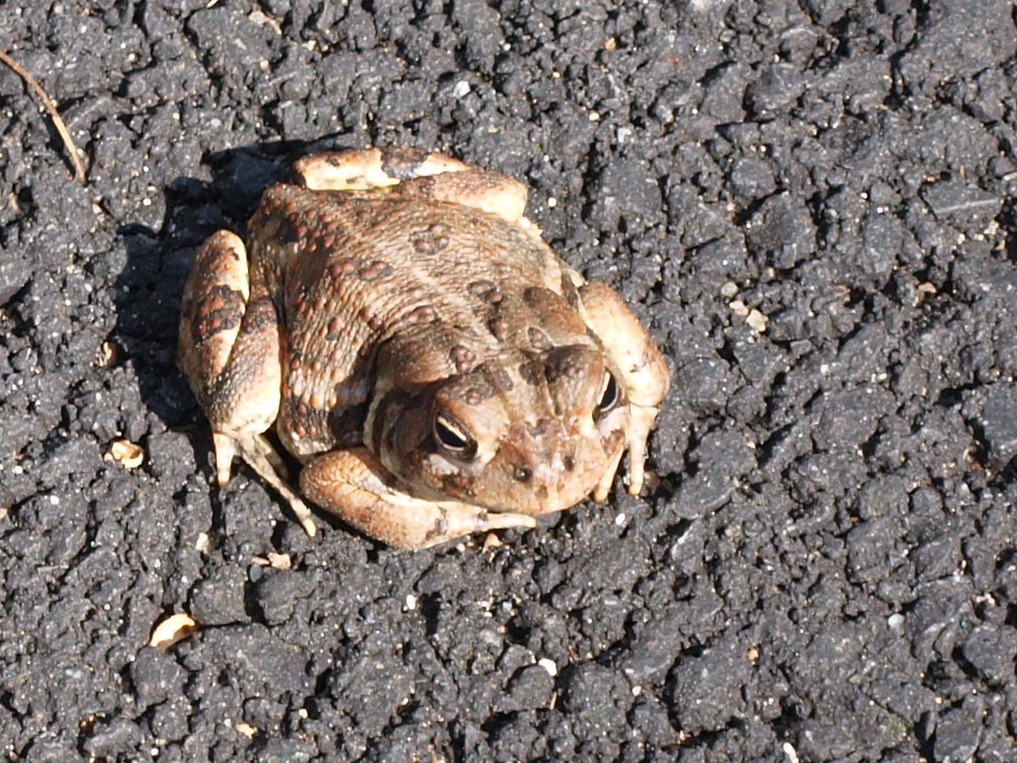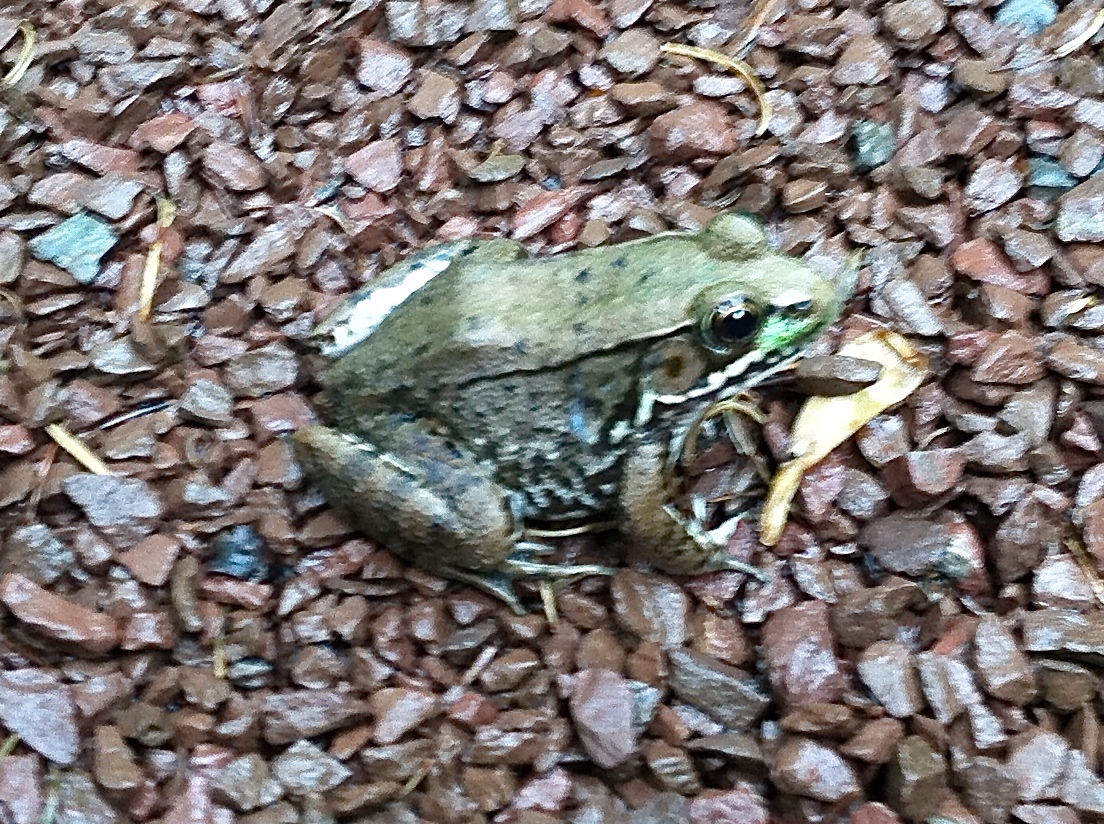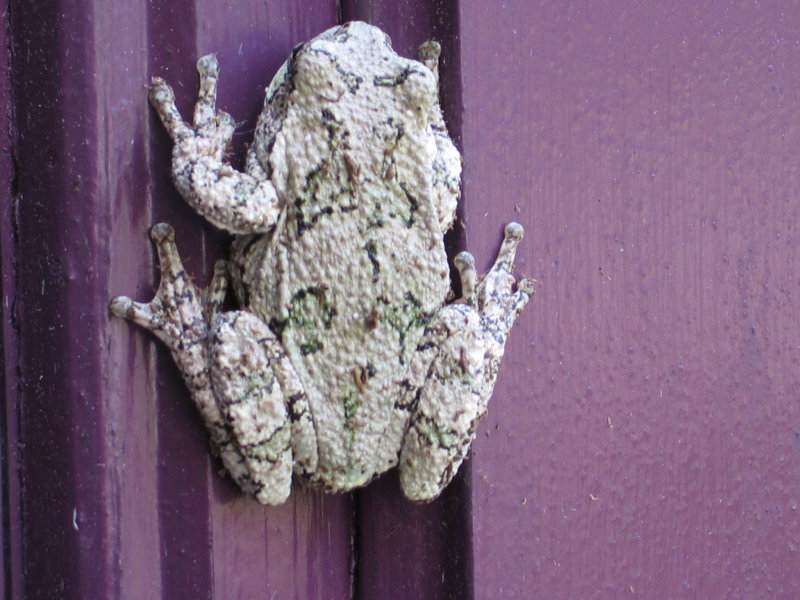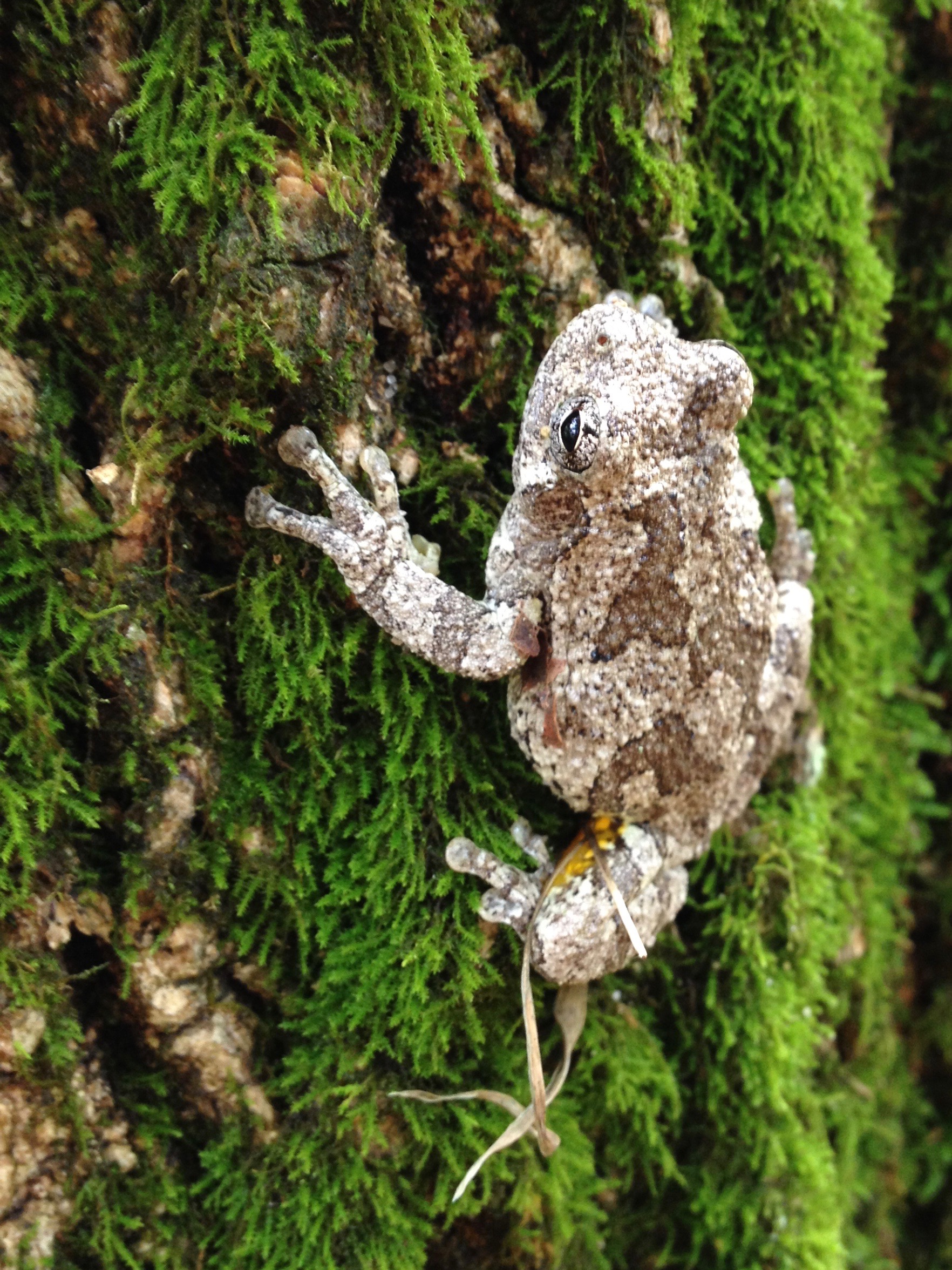Thanks to members Laura Sebastianelli and Deborah Hammer, FODMers are conducting a frog and toad survey in Dyke Marsh and other areas, as part of the FrogWatchUSA national monitoring program. People living near Dyke Marsh West have heard fewer frog and toad calls in recent years and FODM would like to document species and trends.
In two spring 2016 trainings, Laura and Deborah explained that the best way to identify a frog or is by the call. “In North America, with few exceptions, males call to attract (normally) silent females and to advertise their territories,” explains Alonso Abugattas in The Reptiles and Amphibians of the Washington, DC, Metropolitan Area.
Here are a few of the points that Laura and Deborah made at the trainings:
- Amphibians are cold blooded. All go through metamorphosis.
- Frogs have bulging eyes; toads’ eyes do not bulge.
- Frogs have strong hind legs for jumping; toads have small legs.
- Frogs have smooth, moist skin; toads have dry, bumpy skin.
- Frogs and toads are indicators of environmental health.
- The American bullfrog (right) is the largest and most prevalent frog in Dyke Marsh.
Some attendees noted that they see frogs all over the roadways when it rains. Laura said “Yes, stay home if you can when it rains because frogs move around more easily in the rain, and sometimes they move great distances. Do the frogs a favor and stay home.”
You can hear some of the sounds of Dyke Marsh, including frogs and toads, at https://soundcloud.com/wildaroundus/sets/sounds-of-greater-dyke-marsh.
Sounds and photos courtesy of Laura Sebastianelli.
|
|
|
|
|






